Food vendors in Cartagena
It’s hard to go hungry when walking through the Centro Historico of Cartagena. In addition to the many excellent restaurants in the city, vendors are selling food on the street almost everywhere you go. Many of these folks use push carts to sell their wares. Here’s a look at some of the different foods we saw.
One of the most prevalent vendors are men who sell flavored shaved ice.
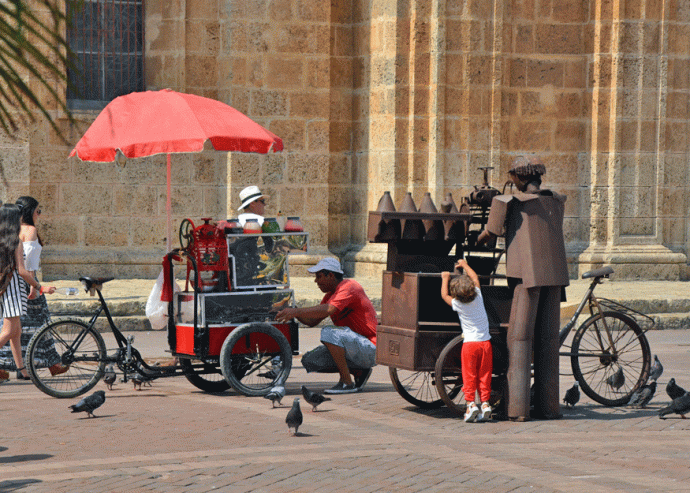
A shaved ice vendor works on his cart while a young lad tries unsuccessfully to get ice from an iron sculpture depicting shaved ice as part of life in Cartagena
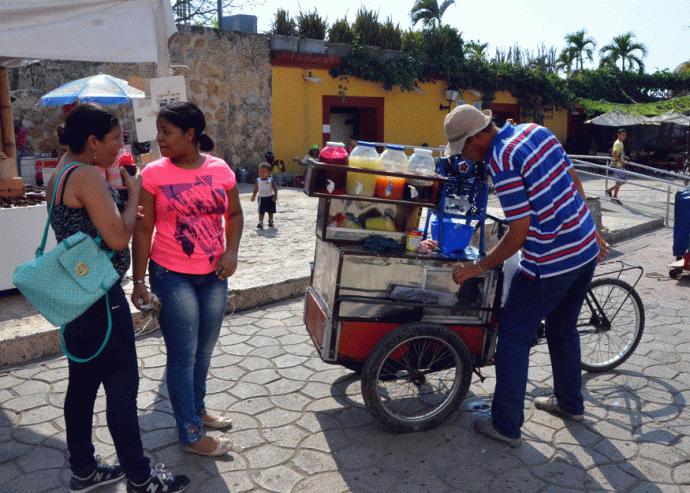
The woman on the left enjoys her shaved ice while the other woman waits while hers is being prepared
Other vendors sell drinks such as lemonade from their carts:
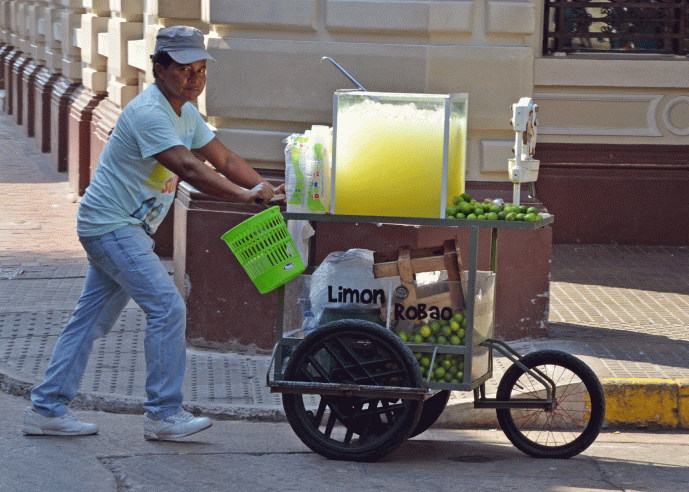
“Limon” in Spanish means “lemon” in English, although the fruits are mostly green like limes, not bright yellow as in the United States
The young man below is typical of street coffee vendors we saw. He pours coffee from the red or green rimmed Thermos-type jugs into Styrofoam cups and sells it to passersby. He knows his target audience may be hungry, so he provides snacks for sale as well. Everything is portable, so he can easily pick it up to head for a new location.
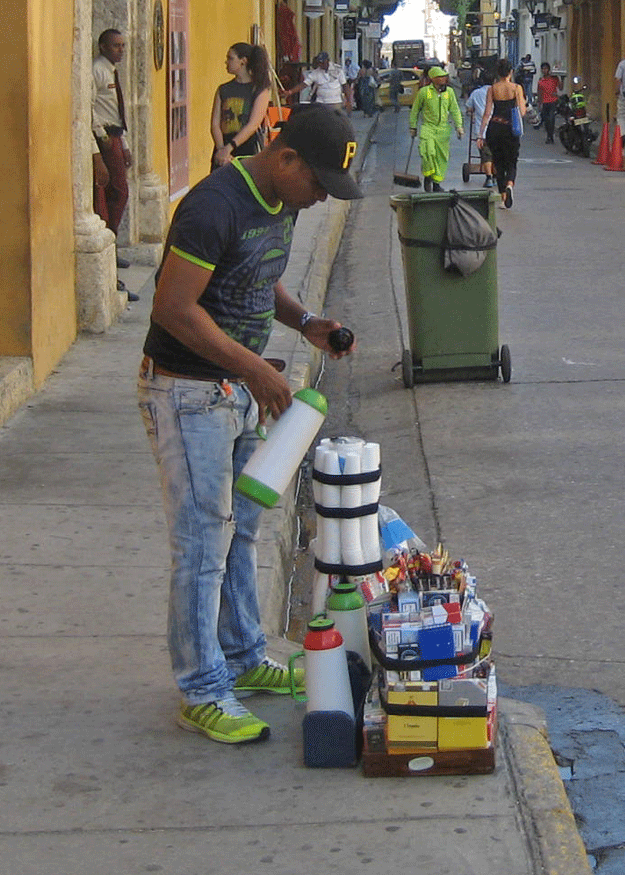
Coffee break time, street style
Among the food products available are arepas and empanadas. An arepa is like a pancake made of corn meal (usually white corn). Dough is formed into a ball then flattened. It can be grilled or fried, but generally in Cartagena vendors tend to prefer deep-fat frying. When cooked, the arepa can be split open and filled with cheese (the queso shown below) or different types of meat.
Empanada is the Spanish word for sandwich. The dough is made from wheat flour and may include meat juices for flavoring. The dough can be baked or fried. Often fillings such as cheese, beef or chicken are added before cooking. The empanada dough is folded over the filling, forming an envelope. The entire unit is usually baked. It resembles a pocket sandwich but tastes like the homemade pastry it is.
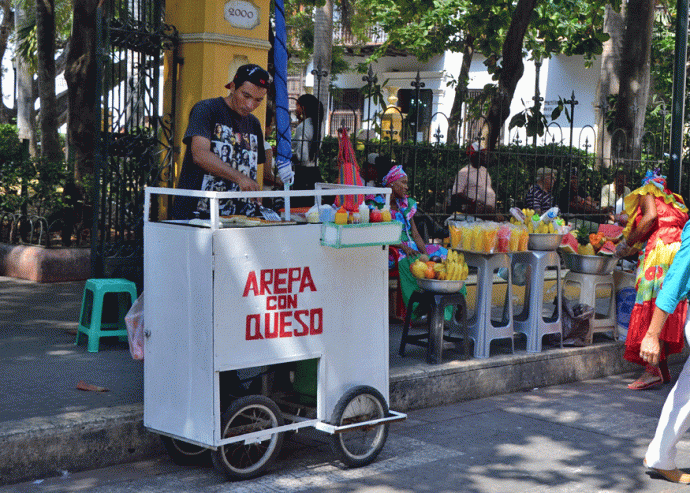
Fresh arepas cooked on the street
Arepas tend to be more common in Cartagena, while empanadas are popular in Chile and Argentina. Many Cartagena vendors have some means of frying the dough on the spot:
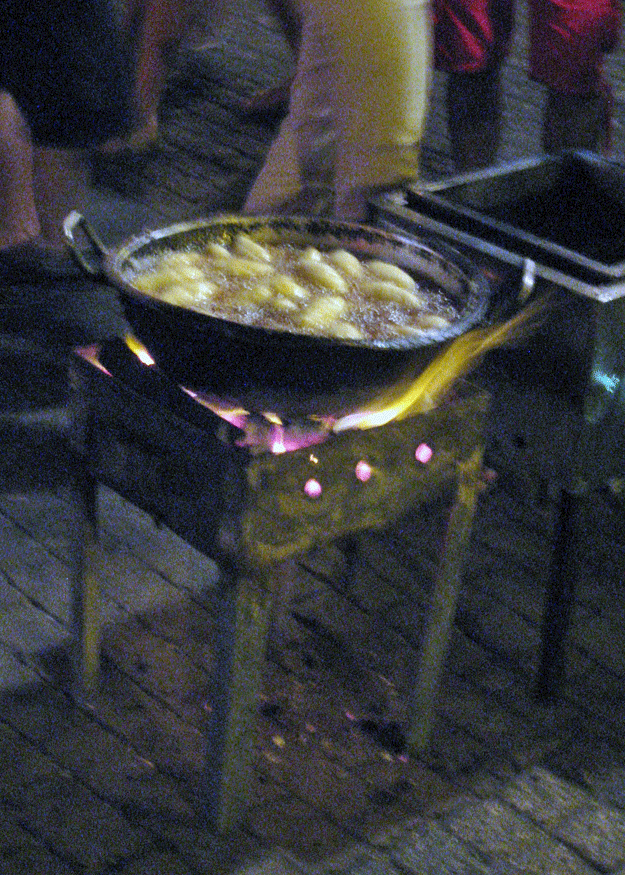
A blurry picture of a charcoal fired arepa cooker in Plaza de San Francisco
Of course, charcoal cookers do have some dangers, such as when the wind picks up.
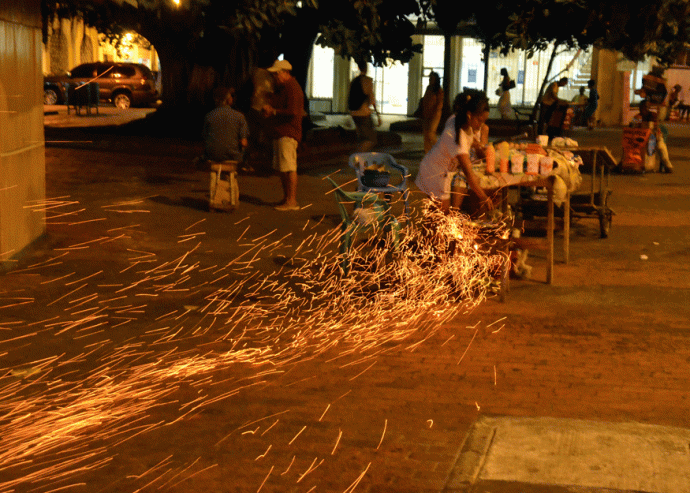
The wind catches the charcoal of an arepa cooker just outside the Clock Tower
Some vendors, usually not in the tourist areas, use much creativity in fashioning their cookers:
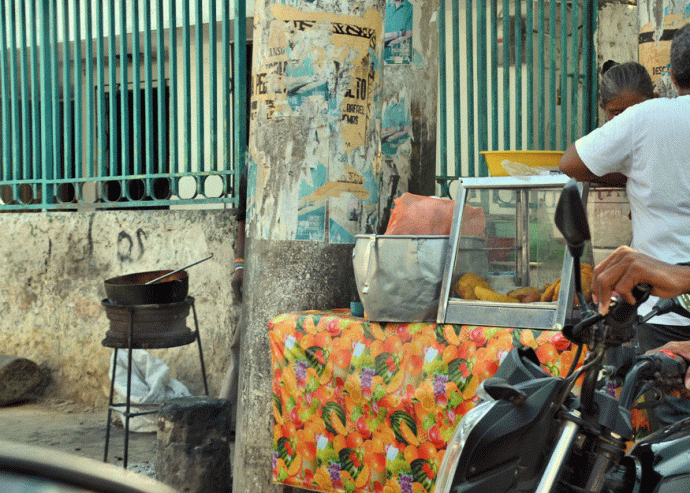
An arepa cooker fashioned from a metal bowl and a steel car wheel
Arepas and empanadas are readily available. Here is an opportunity for a quick snack from one of the wandering vendors at the beach.
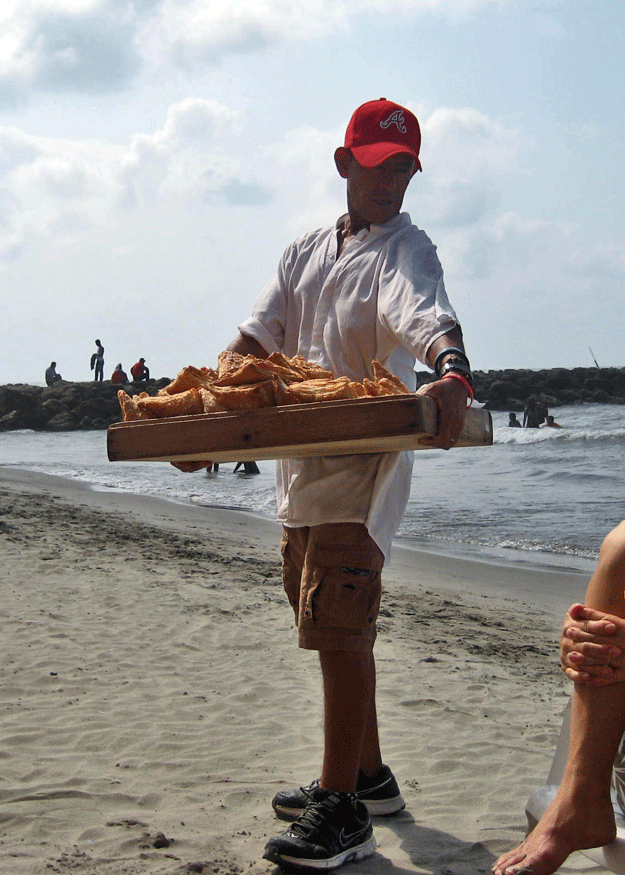
Carts selling fruits, vegetables, and other items are important to providing food products. But this post is getting long, so we will take a look at those carts next time.
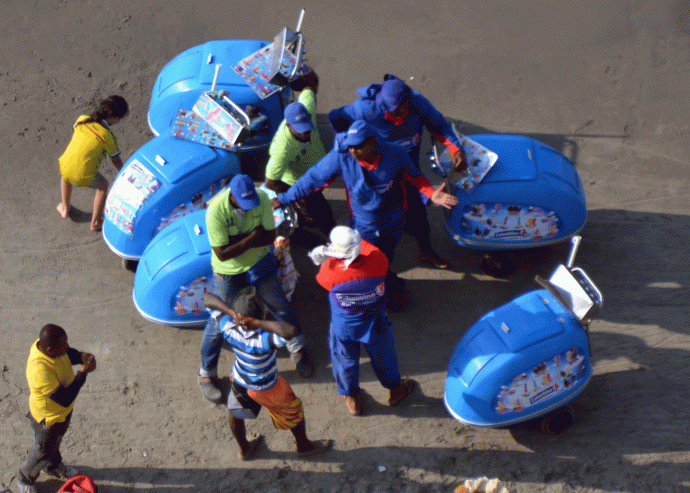
Ice cream vendors on the beach meet to discuss their plan for world domination
